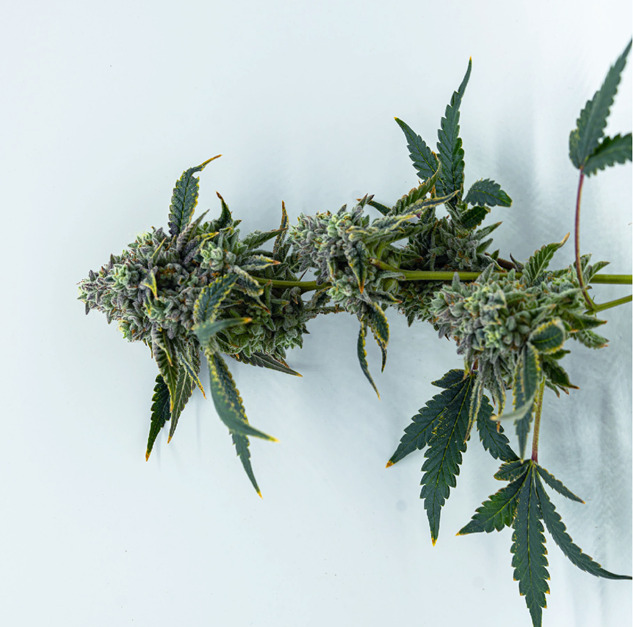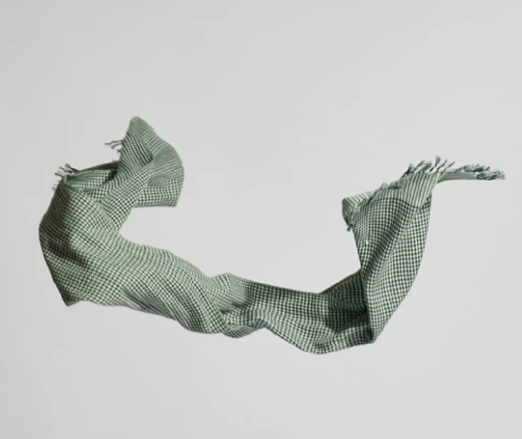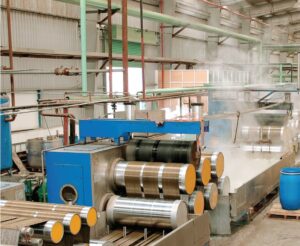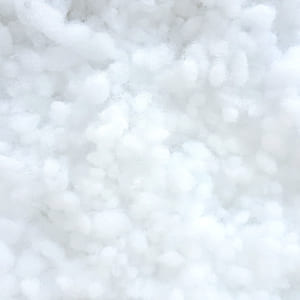Hemp: Textile Material
Hemp is one of the most historically celebrated textile fibres in human history, used in textile, paper, oil, canvas and rope production; the oldest paper in the world is supposed to be made from hemp in China. It is a bast fibre produced from the Cannabis Sativa plant and is unique in that every part of the plant can be utilised to make items ranging from fuel and resins to bricks, paper and textiles. Once one of the most important fibres and widely grown in Europe and Asia, it was used to create canvas for ship sails, ropes and nets amongst other important commodities. Cultivation of hemp continued until the 1940s; however, it began to decline in production due to the controversies surrounding the plant as both hemp fibre and marijuana are derived as distinct cultivars but from the same plant species. Hemp is now being increasingly recognized once more globally for its numerous useful and sustainable properties, particularly essential for the fashion industry of the 21st Century.
The hemp production process
1 Cultivation
Hemp can grow in a variety of soil types and climates but is best suited to loamy, well-aerated soil, and warm, tropical or moderate cool climates.
2 Harvesting
This process breaks the stems or hurd by passing them through a breaker or fluted rolls, or through a machine called a decorticator.
3 Retting
This process breaks down pectin, that binds the hemp fibres together, with the help of bacteria, fungi or chemicals. The crop is soaked and moistened to soften and separate the fibers. In water retting, the fibres are soaked in water streams or ponds with natural bacteria while in dew retting, the crops are laid out in the open fields for several weeks
4 Breaking
After 70-90 days, the crop is ready to be harvested for textile fibre. This takes place after flowering before the seed sets in and the fibres become coarse.
5 Scutching or Cottonizing
For wet spinning long hemp fibre, the broken stem is beaten to separate the impurities from the raw material and the fibres from the woody core.
An alternate and a more commercial alternative process is cottonisation where hemp becomes softer and blendable with other fibres such as cotton, Tencel, rPET etc. and spinnable on cotton spinning systems. Additionally, cottonisation can be performed on both long and short fibre and also on hemp grown for non-fibre purposes, making it more scalable and economical. Once cottonised, it does not go through the following processes.
6 Hackling
After scutching, the fibres are combed to straighten them and further separate them from the woody core or shives, into a continuous sliver.
7 Roving
A sliver is drawn out and twisted to be spun into yarn.
8 Spinning
To produce fine yarn, the slivers are wetted in troughs of water; otherwise, the yarns are dry spun, resulting in coarser yarn.
Key facts
China is the largest producer, accounting for 30-40% of global hemp production in 2019.
USA & Canada: Once the most widely grown in the USA, hemp production was banned until the last decade, due to political lobbying against the production and legalization of marijuana. Now the USA is one of the largest hemp growers growing 146,000 hectares in 2019 , along with Canada, that saw an 80% increase between 2016-2017.
France is Europe’s leading hemp- grower, growing 44000 acres in 2017 2 and the largest producer of hemp seeds in the world.
The social and environmental impact of hemp
Hemp is naturally one of the most sustainable fibres that can be grown. It is fast-growing, has a high yield with upto 250% more fibre than cotton1 and requires less land to grow, requires no harmful pesticides or chemicals, and requires 1/3rd-1/4th of the water used by conventional cotton. Growing hemp is also beneficial for the soil by limiting topsoil erosion, increasing fertility by supplying nutrients, absorbing heavy metals from the soil and helping to revive degraded land. It can be used as both a rotational as well as a monoculture crop. Every part of the plant can be utilised to make products from paint, fuel and oil to construction material, making this a zero-waste crop. In addition to this, hemp is a carbon negative crop with the ability to capture 15 tonnes of CO2 per hectare of industrial hemp.2 Hemp is also labour-intensive and largely mechanically processed, thereby generating more employment and livelihoods.
However, the cultivation and processing of hemp can have severe environmental impacts on both people and planet, if not responsibly produced. Since hemp production has been restricted due to global governmental policies, technological innovation in processing has not taken place at the same pace as other fibres. Thus, old and ecologically inefficient methods may be used to process hemp, that may negate any of the sustainable benefits that it provides.
The key sustainability issues with hemp production lie in retting and processing.
Retting
To soften the harvested stems and remove the natural binding agent called pectin, water, bacteria or chemicals are used. These chemicals may be harmful and contaminate groundwater, during improper disposal of wastewater and both chemical and biological pollution (due to natural impurities) can occur. Water retting may also consume large amounts of water and energy, used to heat water. This contamination can then affect the health of farmers, workers and local communities. 3 However, sustainable retting without the use of chemicals and heat is also possible through dew, field and snow retting.
Processing
Though most processes involved are largely mechanical and non-polluting, certain areas can have a large impact on the environmental footprint of hemp. Wet-spinning, where the yarn slivers are wetted in troughs of water to produce finer yarn, as well a range of chemical dyes and finishes such as wrinkle-resistants, and softeners may be applied to change the feel of the end-fabric, that use large amounts of water, energy and harmful chemicals. If wastewater is not treated and is not recycled along with chemicals, this can be leaked into surrounding ecosystems, acutely affecting local communities.
Designing a collection with hemp?
Here are 4 aspects to consider.
Fibre-Blending
If necessary, hemp is blendable with other fibres to obtain the right properties for the fabric to be produced. Blending with organic cotton can make the fabric more elastic while blending with wool or silk helps to create a softer feel and better drape; however if blending is required, aim to blend with other cellulosic fibres to aid recyclability.
Transparency
Hemp is labour-intensive and can provide livelihoods and generate wide-spread employment but needs to be appropriately monitored for labour transgressions. Look for Fairtrade certified sources that can ensure the people involved have been treated and paid fairly.
Processing
Hemp does not need fertilizers or pesticides to grow; however, it can be processed with harmful chemicals. Though sometimes difficult, aim for responsible sourcing of hemp through GOTS or Oeko- Tex certified sources that can verify the organic processing of hemp.
Disposal
Hemp is naturally biodegradable but the processing largely determines how it can be disposed of as toxic chemical finishes and dyes can inhibit the ability of hemp to biodegrade. Avoid blending hemp with other synthetic fibres as this inhibits both recycling and biodegradability of the fabric. Look for certified organic hemp, toxic-free or natural dyes or hemp in its natural colour (ranging from greys and greens to creams and blacks) instead.






